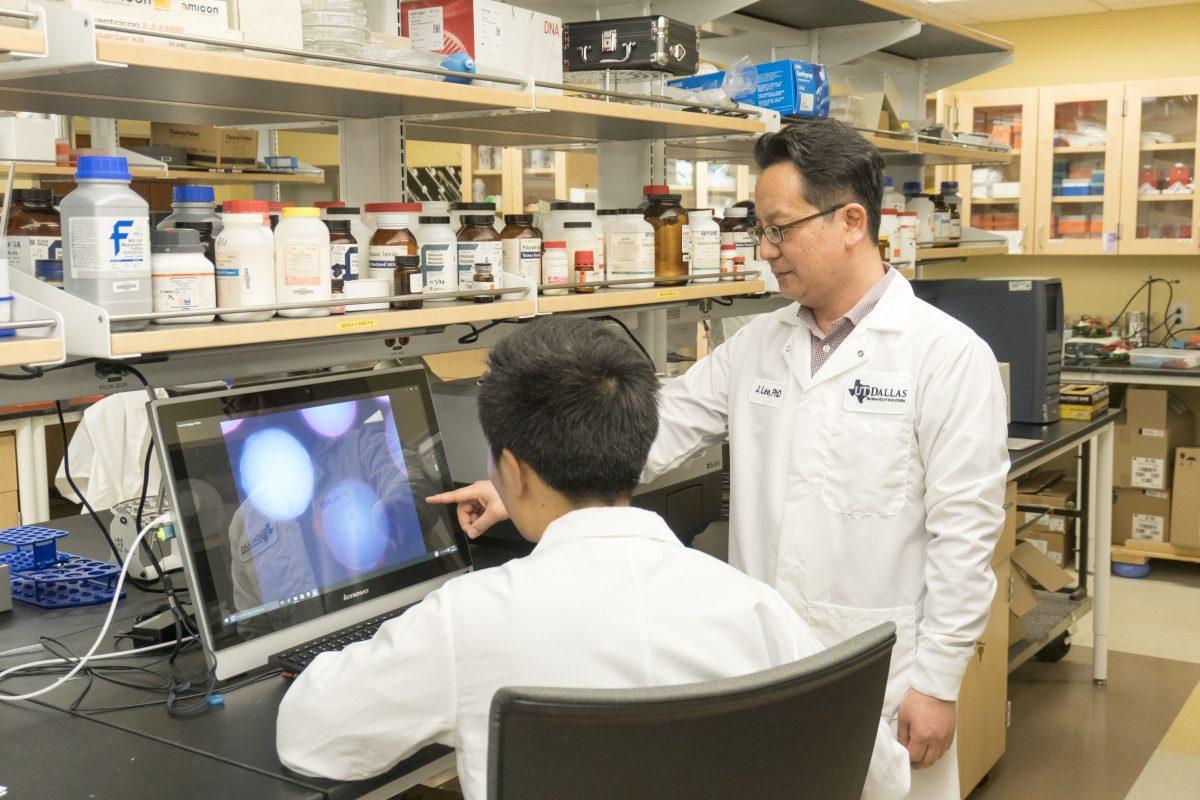A UTD professor and his team had recent progress in isolating cells that are believed to be the root cause of most cancers.
Jiyong Lee, an assistant chemistry professor , and his team of student researchers have developed a unique method to isolate aggressive cells called cancer stem cells, which are thought to be the source of many metastasized cancers.
“Every summer, we have to mow the lawn,” Lee said. “We just cut the top part of the weed, but we know that it’s going to come out eventually because the root is still there. You can think of the cancer stem cell as the root of the weed.”
These cancer stem cells are resistant to chemotherapy and radiation, and even a small population of these cells is enough to initiate tumor growth again.
The main limitation Lee and his team faced was in detecting these cells to isolate them. Luxi Chen, a chemistry research associate and part of Lee’s team, said their primary work was to locate cells that can identify cancer stem cells.
“Through our research, we identified small molecules that bind only to cancer stem cell populations and not to normal cells or non-cancerous stem cell populations,” Chen said.
The research effort started in early 2013 and received funding from the Cancer Prevention and Research Institute of Texas to conduct cancer stem cell research focusing primarily on the prevention and treatment of breast cancer.
Around the summer of 2016, the team was able to successfully isolate cancer stem cells in their experiments, a breakthrough for their research. Their work was published Feb. 19 in Chemistry: A European Journal.
The team also collaborates with Zhenpeng Qin, an assistant professor of mechanical engineering at UTD, in eliminating the targeted cancer stem cells.
“We are trying to conjugate our small molecule with a nanoparticle,” Lee said. “We want to deliver this nanoparticle conjugate to the cancer stem cells and then use laser to hit the cells and destroy them.”
Lee said his team is hopeful of making more progress soon, and have already filed a patent for their unique approach in tackling cancer stem cells.
“I knew it was not going to be easy to research about it,” Lee said. “I get emails from patients and their family members, telling their story. Every time I got those emails, it got me thinking that we must do our best. We are actually getting something that patients can use and it can cure their disease.”

















